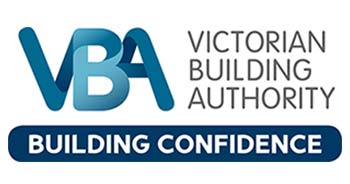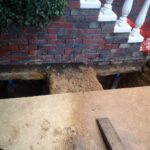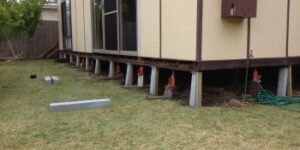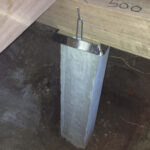
April Constructions
April Constructions Over 25 years Experience Melbourne's most trusted Underpinners & Restumpers Fully Licensed! Master Builiders & VBA members
Call us: (03) 8547 4777
CONTACT US
VIDEO TUTORIAL & INFORMATION


UNDERPINNING MELBOURNE SERVICES
What is Underpinning?
Underpinning is a process used to strengthen the foundation of a building or structure by adding support to the existing foundation. This is typically done to address issues such as subsidence, settlement, or soil erosion that can cause damage to the building, including structural issues like cracked walls and jamming windows that often require foundation repairs. Underpinning involves excavating the soil beneath the foundation and installing new support systems, such as concrete stumps or piles, to transfer the weight of the building to a more stable soil layer. This process can help to prevent further damage and ensure the stability and safety of the building
Definition of Underpinning
Underpinning is a construction technique used to strengthen and stabilize the foundation of a building or structure. It involves extending the foundation of a building to a deeper level, typically to a more stable soil or rock layer, to provide additional support and prevent settlement or collapse. This method is often necessary when the original foundation is inadequate or has been compromised due to soil settlement, erosion, or other factors. By reinforcing the existing foundation, underpinning ensures the long-term stability and safety of the structure.
Importance of Underpinning for Existing Foundation
Underpinning is crucial for existing foundations that are showing signs of distress or damage. If left unaddressed, foundation problems can escalate, leading to costly repairs, safety hazards, and even structural collapse. Underpinning helps to:
Prevent further settlement or collapse
Restore the structural integrity of the building
Reduce the risk of expensive repairs
Enhance the overall safety and stability of the building
By addressing foundation issues promptly through underpinning, property owners can safeguard their investments and ensure the longevity of their structures.
is effectively strengthened, providing long-term stability and safety for the building.
Causes of Damage to Foundations
Foundations can be compromised due to a variety of factors, each contributing to the weakening of the structure. Common causes of foundation damage include:
Soil Expansion and Contraction: Changes in soil moisture levels can cause the soil to expand or contract, exerting pressure on the foundation and leading to cracks or shifts.
Water Erosion: Poor drainage or water accumulation around the foundation can erode the soil, undermining the foundation’s stability.
Poor Construction Techniques: Inadequate construction practices, such as insufficient compaction or improper materials, can result in a weak foundation.
Inadequate Foundation Design: Foundations that are not designed to handle the building’s load or the soil conditions can fail over time.
Natural Disasters: Events such as earthquakes, floods, or landslides can cause sudden and severe damage to foundations.
Understanding these causes is essential for identifying potential foundation issues and taking proactive measures to address them.
Soil Expansion and Contraction
Soil expansion and contraction are significant contributors to foundation damage. When soil absorbs water, it expands, putting pressure on the foundation and causing it to shift or crack. Conversely, when soil loses moisture, it contracts, creating voids that can lead to foundation settling. Factors influencing soil expansion and contraction include:
Temperature and Humidity Changes: Seasonal variations can cause soil to repeatedly expand and contract, stressing the foundation.
Water Absorption and Desiccation: Soil that absorbs water from rainfall or irrigation can expand, while dry conditions can cause it to contract.
Soil Composition and Density: Clay soils, in particular, are prone to significant expansion and contraction due to their high water retention capacity.
Vegetation Growth and Decay: Tree roots and other vegetation can affect soil moisture levels, contributing to expansion and contraction cycles.
Addressing soil-related foundation problems promptly is crucial to prevent further damage and ensure the long-term stability of the building.
Types of Underpinning
There are several types of underpinning methods that can be used, depending on the specific needs of the building and the soil conditions. Traditional underpinning, such as mass concrete underpinning, involves extensive excavation to support a home’s foundation and is often costly, time-consuming, and can lead to future issues. Some common types of underpinning include:
Mass Concrete Underpinning
Mass concrete underpinning is a traditional method of underpinning that involves excavating the soil beneath the foundation and filling it with concrete. This method is often used for buildings with shallow foundations or for buildings that require a high level of support. The concrete is poured into the excavated area and allowed to set, creating a solid foundation that can support the weight of the building.
Benefits of Underpinning
Underpinning can provide several benefits to building owners, including:
Improved stability and safety: Underpinning can help to prevent further damage to the building and ensure that it remains stable and safe.
Increased property value: Underpinning can help to increase the value of the property by addressing any foundation issues and ensuring that the building is stable and secure.
Reduced maintenance costs: Underpinning can help to reduce maintenance costs by addressing any foundation issues and preventing further damage to the building. Addressing foundation issues early can also reduce long-term underpinning cost.
Peace of mind: Underpinning can provide building owners with peace of mind, knowing that their building is stable and secure. Underpinning costs can vary significantly based on project complexity and building accessibility.
Why Choose a Professional Underpinner?
Choosing a reputable underpinning contractor is essential to ensure that the underpinning process is done correctly and safely. A professional underpinner will have the necessary experience and expertise to assess the building and determine the best course of action. They will also have the necessary equipment and materials to complete the job safely and efficiently. Additionally, a professional underpinner will be able to provide a warranty for their work, giving building owners peace of mind.
It’s worth noting that underpinning is a complex process that requires specialized knowledge and equipment. Attempting to underpin a building without the necessary expertise and equipment can lead to further damage and safety risks. Therefore, it’s essential to choose a professional underpinner who has the necessary experience and expertise to complete the job safely and effectively.
Contact Us
Call now for more details
LINKS
© Copyright April Construction














